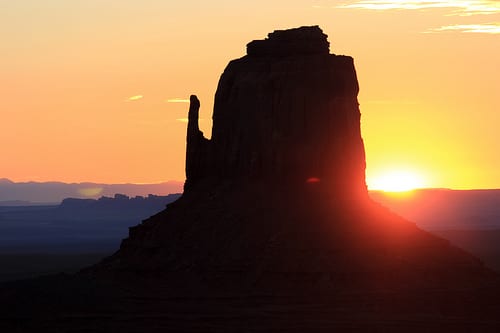There are only three types of reserved federal land in the United States, military, public, and Native American. During the late 1700’s and early 1800’s, the United States government made a series of treaties with individual Native American nations that are indigenous to the area. These ‘contracts among nations’ recognized and established unique rights, titles, and benefits for the tribes who agreed to cede millions of acres of land to the US government and accept its protection. Here are four different types of Native American lands that can be owned by individuals and tribes.
Reservation
One of the most well-known types of Native American lands is the reservation. There are approximately 56.2 million acres that are held in trust by the United States government for Native American tribes across the nation. The largest reservation is the approximately 16 million acre Navajo Reservation in Utah, Arizona, and New Mexico. The smallest reservation is approximately 1 acre and is the Pit River Tribe’s cemetery in California. Some reservations are the remains of what a tribe used to originally own, and other were created by the US government for resettling Native American populations away from their homelands forcibly. Reservations are, for the most part, exempt from state jurisdiction (taxes), and can fall under the Housing and Urban Development Section 184 Program if the tribe or individuals in the tribe decide to renovate buildings or build new housing on their land. It’s good to remember though that they are sovereign nations, so if they choose to not participate or not allow the HUD 184 loans to be done on their lands, they have the right to.
Allotted Lands
Another type of Native American land is allotted land which is distributed to individuals usually in 40, 80, and 160 acre parcels. Those who are given this land have undivided interest over the land which is unlimited in its duration, which means that the land can be divided among the heirs. Starting with the General Allotment Act in 1887 (Dawes Act) until the Indian Reorganization Act of 1934, treaties were made and allotments were given to members of tribes whose lands were taken and held in trust by the government. As a result of this, much of the land was taken out of trust and became subject to state and local taxation, so much of it was passed out of Native American hands. As of today, there is approximately 10 million acres of land that is individually owned allotted land held in trust for those that hold the allotted land and their heirs.
Restricted Fee Lands
Title of land is held by an individual person or tribe. This land can only be changed by the owner with the approval of the Secretary of the Interior and the federal government. This includes the limitation on how these individuals and tribes can use the land including building on the land, renovating existing buildings, and being able to take out home mortgages under HUD Section 184 for these actions. Fee lands are subject to county, state, and federal taxes and this land can be used as collateral for a loan, unlike trust lands.
Trust Land
Another major type of Native American lands are lands held in trust for tribes. Trust lands are mostly within reservation boundaries but there are some that are off-reservation which can be religious sites or pieces of land allotted to individuals. The land is held on behalf of the tribe by the state and is not subject to state property tax and government. These lands are under the jurisdiction of state law though. These lands are not subject to any city, county, state, or federal taxation.
For more information on Trust lands, Reservations, Restricted Fee lands, and Allotted lands, visit the National Congress of American Indians online book.
If you have questions about the different types of Native American land or need any clarification on what was covered in this post, feel free to leave a comment or contact 1st Tribal Lending with your question privately.

